Relax and Reflect in a Blue Landscape
http://decor-ideas.org 11/08/2014 05:23 Decor Ideas
“Blue color is everlastingly appointed by the Deity to be a source of delight,” wrote Victorian art critic John Ruskin. And, indeed, surveys reveal blue to be among the most popular favorite colors. What makes it so well liked? Perhaps the range of shades available, from the deepest indigo through cyan to the blue-greens of turquoise and teal, attract us. In addition, blue is believed to have a soothing effect on the human mind, as it helps produce calming chemicals in the brain.
Let’s see how designers have used this popular shade outside, from planting schemes to accent colors or full blue-themed landscapes.
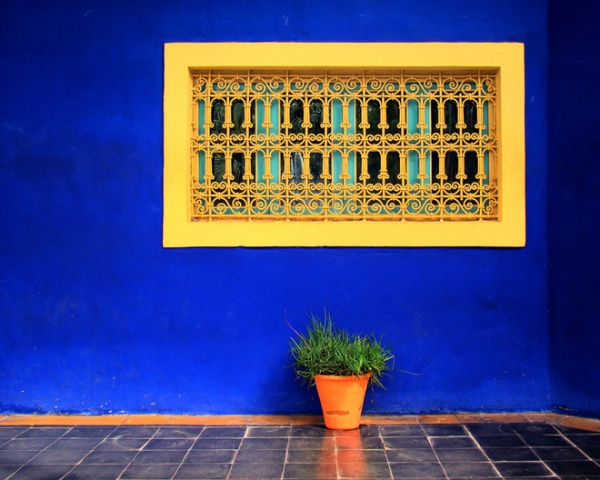
Anyone who has visited Jardin Majorelle, the 12-acre garden in Morocco famously restored by Yves Saint Laurent and Pierre Bergé, will know just how beautiful blue can be as the foundation of a garden’s design. Its original designer, Jacques Majorelle, used bright cobalt blue throughout the property’s gardens and buildings.
Photo by Uspn (Bjørn Christian Tørrissen)
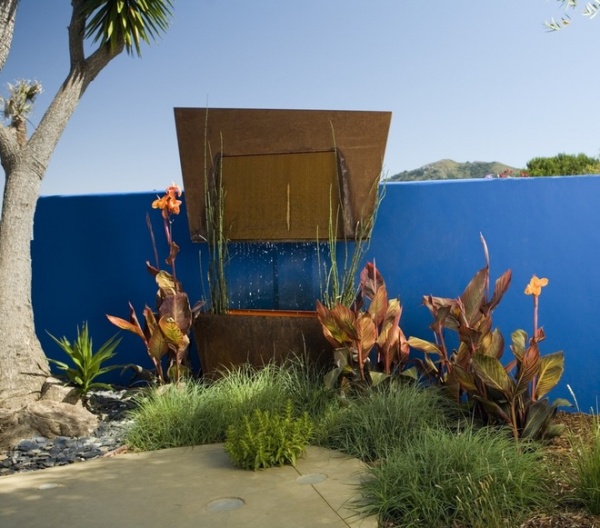
This blue wall dazzles under the clear blue sky without overpowering, becoming almost one with the sky beyond. Like green, blue is naturally restful to the eye, as both colors surround us in our natural landscape, contributing toward a feeling of tranquillity and well-being.
Opposites on the color spectrum always create dazzling combinations. Here the planting of the orange cannas against the blue wall makes both colors really zing.
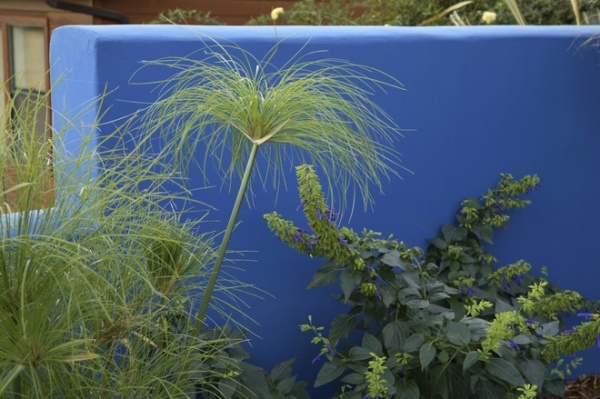
The use of this sumptuous wall as a backdrop for architectural plants seems to pay homage to the work of the Mexican architect Luis Barragán. Barragán loved using vivid colors, especially on the garden walls attached to his modernist houses, where he felt they accentuated the buildings’ natural surroundings. His use of bright cobalt blue on those walls is thought to represent the bright blue Mexican sky, and he drenched his houses in bold, unforgettable color.
See more of this Central California landscape design
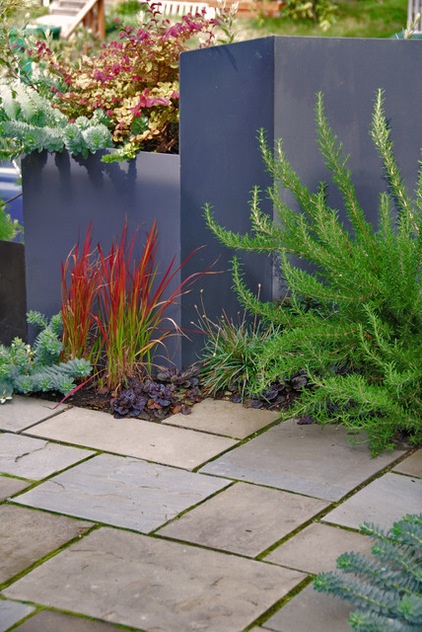
The tones of blue used in the softer light of more temperate gardens tend to not be so bold, with a preference for the darker shades of navy and ultramarine rather than the lighter tones of azure or sky blue. The matte finish of this powder-coated Cor-Ten steel wall creates an elegant backdrop for a variety of foliage colors, achieving a similar purpose as the bright cobalt wall in the previous photo.
The deep red blades of Japanese blood grass (Imperata cylindrica ‘Rubra’) stand out against the muted blue of the wall. Blue is a receding color and tends not to pop against many other colors, except when it meets complementary colors like yellows and oranges.
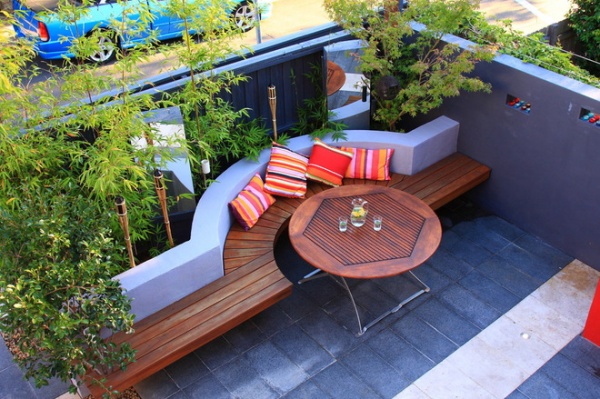
This blue garden is a cool escape from the world on the other side of the wall. The steel blue granite paving sets the foundation for the deep blue walls and sky-blue bench back. A fresh green Japanese maple (Acer sp) and bamboo hedge brighten the blue garden, interrupted only by the strong, warm colors of the cushions. This urban courtyard really is a rhapsody in blue.
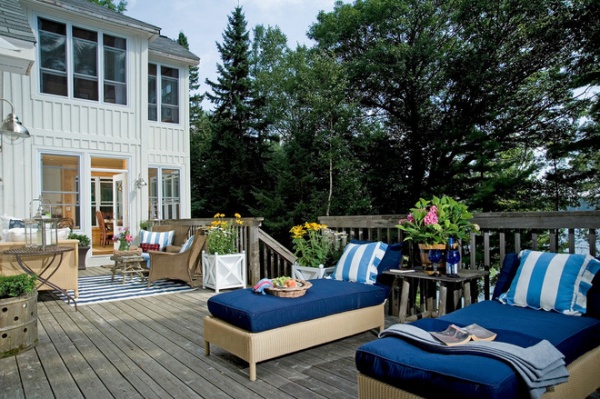
You may prefer to use blue as an accent color on furniture and accessories. With its link to sea and sky, blue engenders feelings of relaxation and tranquillity, making it the perfect choice for lounge spaces.
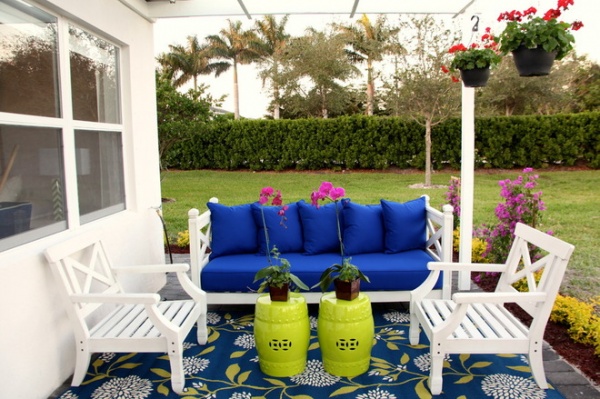
White has a special affinity for blue — just think of the blue and white willow-patterned delftware so loved by the rich and wealthy of the 17th century.
The color combination makes this patio feel fresh, aided by the yellow, one of blue’s complementary colors, seen both in the tables and the clever choice of rug, which draws all three colors together.
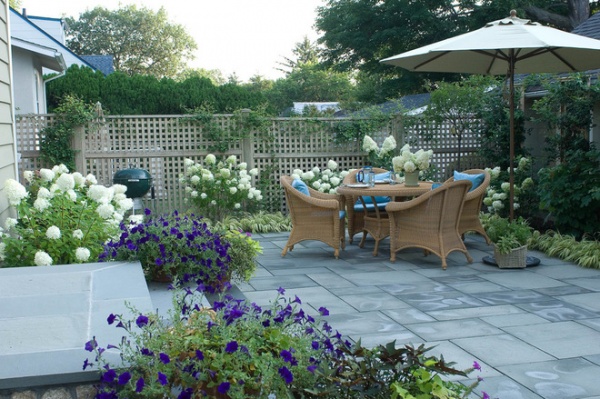
This garden is built around the use of blue, from the bluestone pavers to the deep ultramarine petunias to the table accessories. The touch of white in the hydrangeas, weathered gray fencing and crisp white table setting completes the effect.
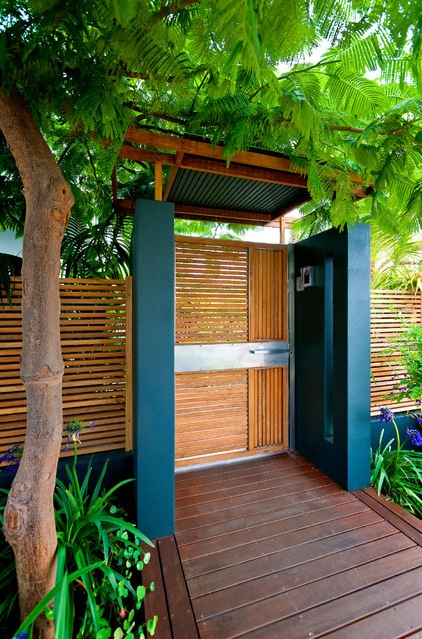
Use blue to highlight features like gates, obelisks, gazebos or, as here, a front entrance. Rather than having a blue door, the designer used the accent color in the side porch supports.
The blue-flowering agapanthus alongside the path and the orange wood stain accentuate the blue.
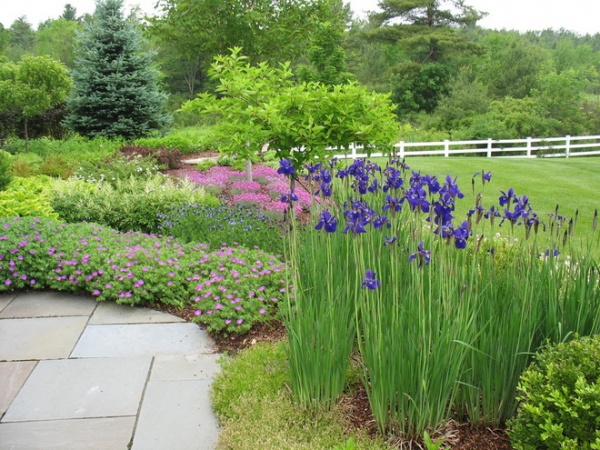
Blue plants can accent a border, break up a color scheme or highlight a garden feature. The deep blue of these clumps of Iris sibirica shows what a versatile color it can be. It could have overpowered the rest of the planting, yet we see how well it combines with the pastel colors it surrounds.
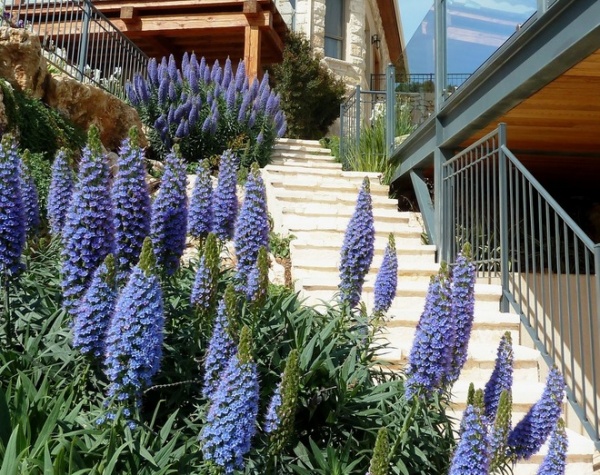
The flowers of Pride of Madeira (Echium candicans) are a true dusty blue and are emphasized by glaucous foliage. The groups of Echiums along the steps lead our eye along the path and exaggerate the staircase’s length.
The planting would have been a strong feature in its own right, but here it harmonizes with the steel color of the railings and deck supports, creating a calming combination.
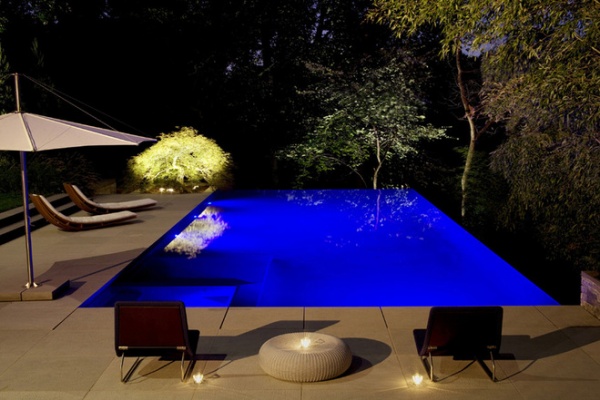
In his book Blue Mind, marine biologist Wallace J. Nichols writes how being close to or in water can improve both body and mind. So if we combine water with stress-relieving blue, as in this stunning lit pool at nighttime, will we lead happier lives?
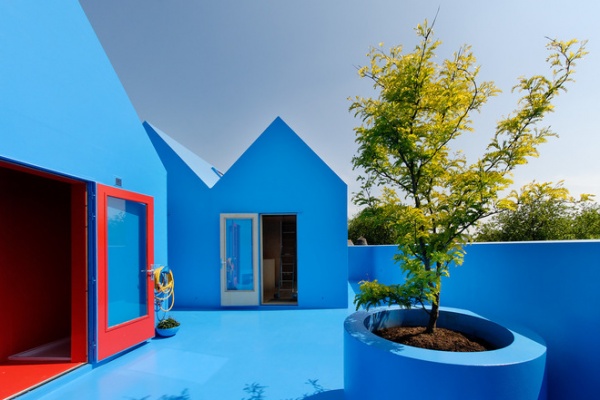
If using blue in our garden designs can soothe modern-day stresses, perhaps we should go all the way and surround ourselves with color. Didden Village is a development in Rotterdam, the Netherlands, built on top of existing houses. All the exterior elements of the buildings, including the roof gardens, are finished in a blue polyurethane coating. It might not be for everyone, but what a bold example of how to use this favored color.
Tell us: Do you use blue in the garden?
More: Explore the Houzz Landscape Design section
Related Articles Recommended












